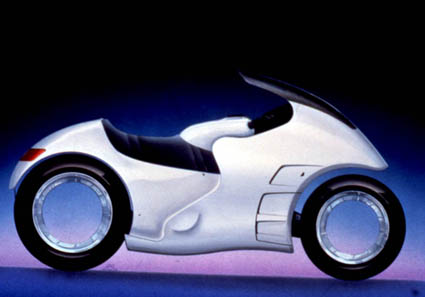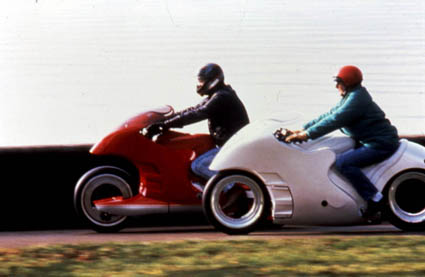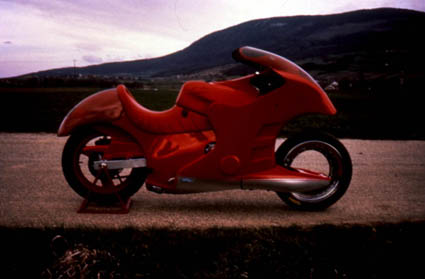1989 Sbarro Orbital Wheel
- Story Cars

- Nov 4, 2024
- 2 min read
The wheel has been a fundamental invention for thousands of years, but in 1989, Franco Sbarro introduced a radical concept that changed the way we think about wheels: the hubless orbital wheel. This innovative design aimed to enhance performance and aesthetics in motorcycle and automotive applications, capturing the imagination of enthusiasts and designers alike.
The Concept
Sbarro's orbital wheel operates on a straightforward principle. Unlike traditional wheels that rely on an axle, this design supports the vehicle at its lowest point, resulting in a lower center of gravity and improved handling. The wheel consists of two primary components:
Rotating Part: This includes the tire, a tubular rim that matches the inner face of the tire, and a brake ring.
Fixed Part: Articulated to the inner tread of the wheel, this part houses the steering mechanisms and braking clamps.
This design allows for the elimination of the traditional hub, giving the wheel a unique and visually striking appearance, especially evident on two-wheeled vehiclesy to Reality
The realization of the orbital wheel required advanced engineering, particularly concerning the bearings. Sbarro collaborated with SKF, a leading Swedish bearing manufacturer, to develop the necessary technology. This partnership led to the creation of Sbarro Mottas Engineering, which worked on the Osmos (Original Sbarro Mottas Orbital System) program, ultimately resulting in several eye-catching prototypes, including the Osmos coupé and various motorcycles.
Orbital orcycles equipped with orbital wheels garnered significant attention. Each model showcased Sbarro's unique approach:
The White Motorcycle: This model exemplifies the purest form of the orbital design, with no visible connections between the bike and its wheels.
The Red Motorcycle: This variant features a visible front linkage arm that conceals part of the wheel, while maintaining a conventional rear wheel with hub and chain.
The Educational Model: Constructed with minimal bodywork, this bike is designed to showcase the mechanics of the orbital wheel clearly.
These motorcycles not only demonstrated the aesthetic potential of the hubless wheel but also hinted at its practical applications.
Challenges and Legacy
Desdesign, hubless wheels like Sbarro's face significant challenges, including power transfer, safe braking, and accelerated wear. While the concept was groundbreaking, it did not achieve widespread adoption . Sbarro eventually sold the rights to his design to1991, who intended to advance the technology further.
Today, the hubless wheel continues to inspire new designs and concepompanies like Reevo Bikes and Verge Motorcycles exploring this technology in contemporary applications. As engineering and materials science progress, the dream of a fully functional hubless wheel may still have a place in the future of transportation.
In summary, Franco Sbarro's orbital wheel represents a fascinating chapter i pushing the boundaries of what a wheel can be while highlighting the ongoing quest to improve upon this ancient invention.












































Comments